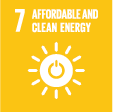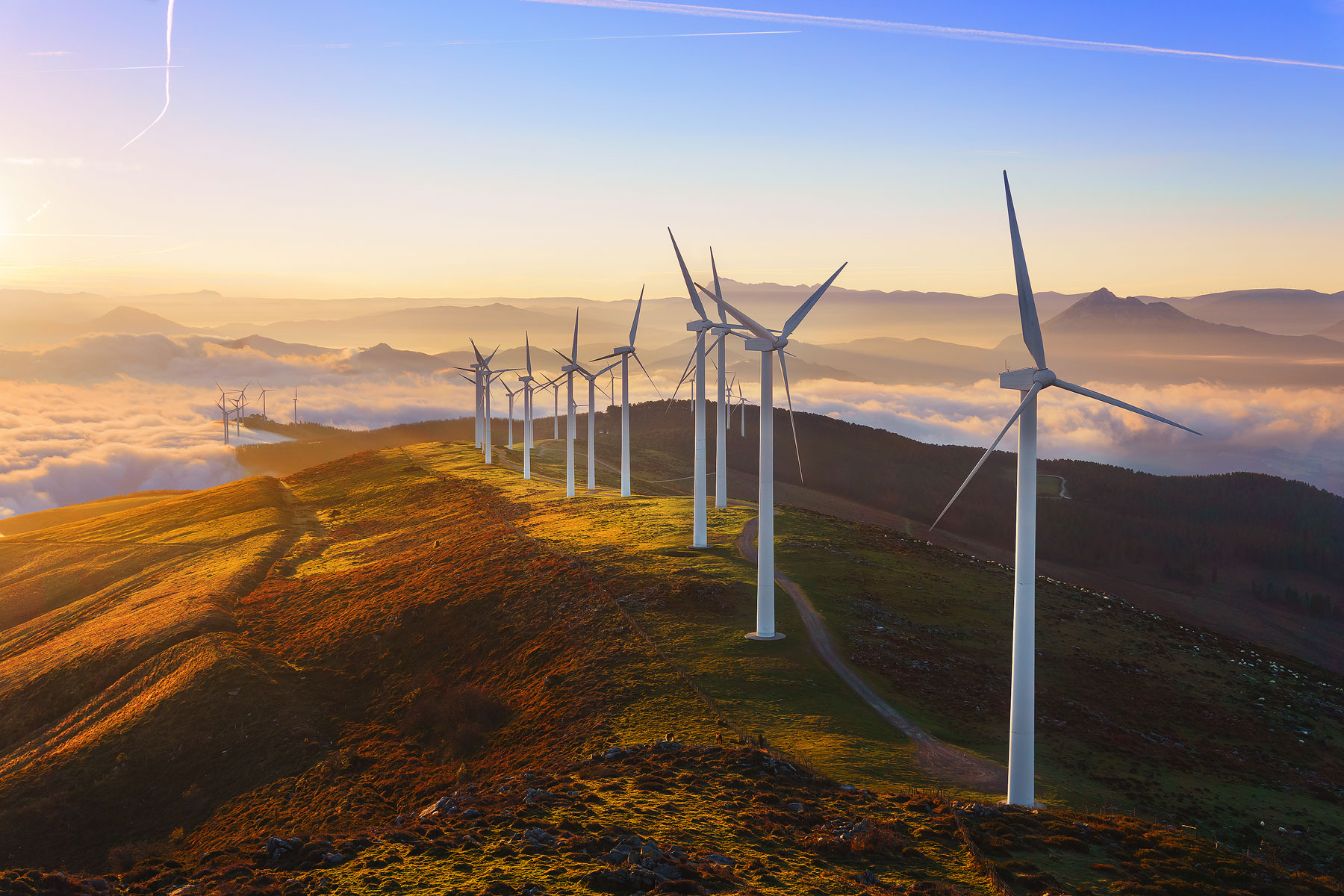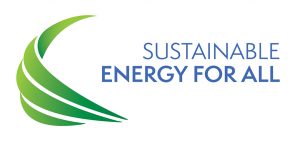
Powered With Clean, Affordable Energy
MAKING A BRIGHTER WORLD
“Energy is central to nearly every major challenge and opportunity the world faces today. Be it for jobs, security, climate change, food production or increasing incomes, access to energy for all is essential. Sustainable energy is opportunity – it transforms lives, economies and the planet.”
– United Nations
The following facts can be found on the official website of the United Nations’ Sustainable Development Goals.
13% of the global population
13% of the global population still lacks access to modern electricity.
3 billion people
3 billion people rely on wood, coal, charcoal or animal waste for cooking and heating.
renewable energy
The share of renewable energy in final energy consumption has reached 17.5% in 2015.
60% Gas Emissions
Energy is the dominant contributor to climate change, accounting for around 60 percent of total global greenhouse gas emissions.
THE SOLUTION?
LET'S CREATE CLEAN, AFFORDABLE ENERGY.
UNI
VER
SAL.
This Sustainable Development Goal strives to ensure universal access to affordable, reliable and modern energy services as well as substantially increase the share of renewable energy in the global energy mix. In the same timeframe, it strives to double the global rate of improvement in energy efficiency, as well as expand the infrastructure and upgrade technology to allow for modern and sustainable energy services in advanced and developing nations.

Stop Wishing. Start Doing.
Here's How To Help
Home Energy Conservation
1. Turn your refrigerator down. Use a thermometer to set your refrigerator temperature as close to 37 degrees and your freezer as close to 3 degrees as possible. Make sure that its energy saver switch is turned on. Also, check the gaskets around your refrigerator/freezer doors to make sure they are clean and sealed tightly. 2. Set your clothes washer to the warm or cold water setting, not hot (CO2 Savings per year: approx. 500 lbs. for electric water heater. 150 lb for gas heater.) 3. Make sure your dishwasher is full when you run it and use the energy saving setting, if available, to allow the dishes to air dry. You can also turn off the drying cycle manually. (Saves approx. 20% of dishwasher's total electricity use.) 4. Turn down your water heater thermostat. Thermostats are often set to 140 degrees F when 120 is usually fine. (Each 10-degree reduction saves 600 lbs. of CO2 per year for an electric water heater. 440 pounds for a gas heater.) If every household turned its water heater thermostat down 20 degrees, we could prevent more than 45 million tons of annual CO2 emissions - the same amount emitted by the entire nations of Kuwait or Libya.
Home Heating and Cooling
1. In the winter, set your thermostat at 68 degrees in daytime, and 55 degrees at night. In the summer, keep it at 78. Lowering your thermostat just two degrees during winter saves 6 percent of heating-related CO2 emissions. That's a reduction of 420 pounds of CO2 per year for a typical home. 2. Clean or replace air filters as recommended. Energy is lost when air conditioners and hot-air furnaces have to work harder to draw air through dirty filters. Cleaning a dirty air conditioner filter can save 5 percent of the energy used. That could save 175 pounds of CO2 per year.
Small investments that Pay Off
1. Buy energy-efficient compact fluorescent bulbs for your most-used lights. Although they cost more initially, they save money in the long run by using only 1/4 the energy of an ordinary incandescent bulb and lasting 8-12 times longer. They provide an equivalent amount of bright, attractive light. Only 10% of the energy consumed by a normal light bulb generates light. The rest just makes the bulb hot. If every American household replaced one of its standard light bulbs with an energy efficient compact fluorescent bulb, we would save the same amount of energy as a large nuclear power plant produces in one year. In a typical home, one compact fluorescent bulb can save 260 pounds of CO2 per year. 2. Wrap your water heater in an insulating jacket, which costs just $10 to $20. It can save 1100 lbs. of CO2 per year for an electric water heater, or 220 pounds for a gas heater. 3. Use less hot water by installing low-flow shower heads. They cost just $10 to $20 each, deliver an invigorating shower, and save 300 pounds of CO2 per year for electrically heated water, or 80 pounds for gas-heated water. 4. Weatherize your home or apartment, using caulk and weather stripping to plug air leaks around doors and windows. Caulking costs less than $1 per window, and weather stripping is under $10 per door. These steps can save up to 1100 pounds of CO2 per year for a typical home. Ask your utility company for a home energy audit to find out where your home is poorly insulated or energy inefficient. This service may be provided free or at low cost. Make sure it includes a check of your furnace and air conditioning.
Getting Around
1. Whenever possible, walk, bike, car pool, or use mass transit. Every gallon of gasoline you save avoids 22 pounds of CO2 emissions. If your car gets 25 miles per gallon, for example, and you reduce your annual driving from 12,000 to 10,000 miles, you'll save 1800 pounds of CO2. 2. When you next buy a car, choose one that gets good mileage. If your new car gets 40 miles per gallon instead of 25, and you drive 10,000 miles per year, you'll reduce your annual CO2 emissions by 3,300 pounds.
Reduce, Reuse, Recycle
1. Reduce the amount of waste you produce by buying minimally packaged goods, choosing reusable products over disposable ones, and recycling. For every pound of waste you eliminate or recycle, you save energy and reduce emissions of CO2 by at least 1 pound. Cutting down your garbage by half of one large trash bag per week saves at least 1100 pounds of CO2 per year. Making products with recycled materials, instead of from scratch with raw materials, uses 30 to 55% less for paper products, 33% less for glass, and a whopping 90% less for aluminum. 2. If your car has an air conditioner, make sure its coolant is recovered and recycled whenever you have it serviced. In the United States, leakage from auto air conditioners is the largest single source of emissions of chlorofluorocarbons (CFCs), which damage the ozone layer as well as add to global warming. The CFCs from one auto air conditioner can add the equivalent of 4800 pounds of CO2 emissions per year.
Home Improvements
1. When you plan major home improvements, consider some of these energy saving investments. They save money in the long run, and their CO2 savings can often be measured in tons per year. 2. Insulate your walls and ceilings. This can save 20 to 30 percent of home heating bills and reduce CO2 emissions by 140 to 2100 pounds per year. If you live in a colder climate, consider superinsulating. That can save 5.5 tons of CO2 per year for gas-heated homes, 8.8 tons per year for oil heat, or 23 tons per year for electric heat. (If you have electric heat, you might also consider switching to more efficient gas or oil.) 3. Modernize your windows. Replacing all your ordinary windows with argon filled, double-glazed windows saves 2.4 tons of CO2 per year for homes with gas heat, 3.9 tons of oil heat, and 9.8 tons for electric heat. 4. Plant shade trees and paint your house a light color if you live in a warm climate, or a dark color if you live in a cold climate. Reductions in energy use resulting from shade trees and appropriate painting can save up to 2.4 tons of CO2 emissions per year. (Each tree also directly absorbs about 25 pounds of CO2 from the air annually.)
Business and Community
1. Work with your employer to implement these and other energy-efficiency and waste-reduction measures in your office or workplace. Form or join local citizens' groups and work with local government officials to see that these measures are taken in schools and public buildings. 2. Keep track of the environmental voting records of candidates for office. Stay abreast of environmental issues on both local and national levels, and write or call your elected officials to express your concerns about energy efficiency and global warming. 3. Select the most energy-efficient models when you replace your old appliances. Look for the Energy Star Label - your assurance that the product saves energy and prevents pollution. Buy the product that is sized to your typical needs - not the biggest one available. Front loading washing machines will usually cut hot water use by 60 to 70% compared to typical machines. Replacing a typical 1973 refrigerator with a new energy-efficient model, saves 1.4 tons of CO2 per year. Investing in a solar water heater can save 4.9 tons of CO2 annually.
There are hundreds of suggestions on how to be more energy efficient. Visit Progress Energy’s website to learn more.
BE A RIPPLE
JOIN THE MOVEMENT.
There are many ways to get involved in promoting clean, affordable energy. By committing to do your part, you take the first step in making a world of difference.





